Blog - EXPERTISE & INNOVATIONS - Solid State Relays - Push-in spring terminals
Solid State Relays with screw terminals are commonly used but more and more push-in terminals are becoming more prominent in industrial applications, especially due to new technologies now available on the market making it easier to insert wires.
Push-in technology is based on plug-in terminals, in which electrical contact is made and the conductor is fixed in place using a spring. The spring is opened by pushing in the conductor itself : Rigid conductors or conductors equipped with a ferrule can be directly connected without the need for any tools.
celduc® relais has now launched a new range of solid state relays with push-in spring terminals to provide more flexibility and meet the needs of various applications.
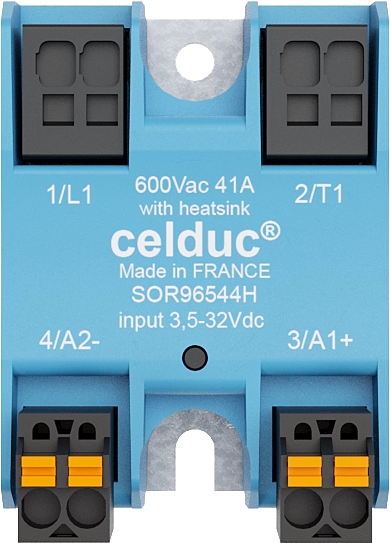
SOR Series of single phase Solid State Relays with push-in terminals is suitable for resisitve loads AC-1.
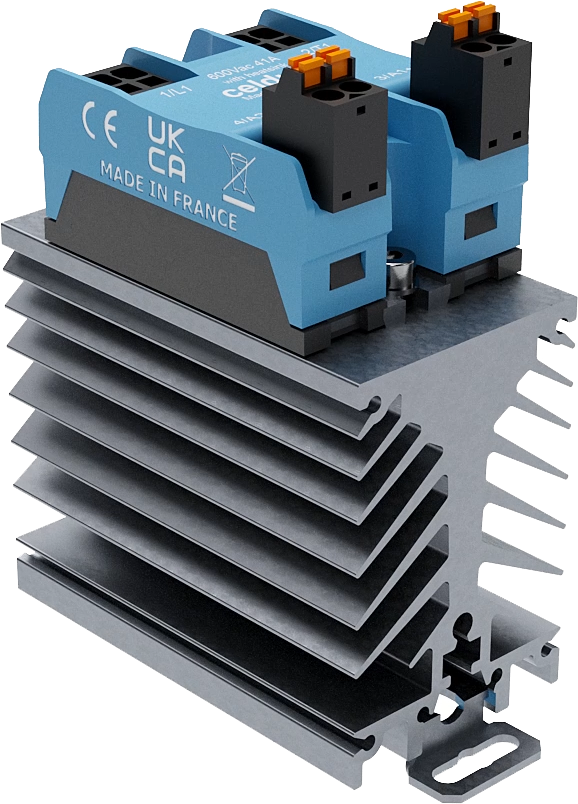
celduc® also offers “Ready to use” models with integrated heatsink.
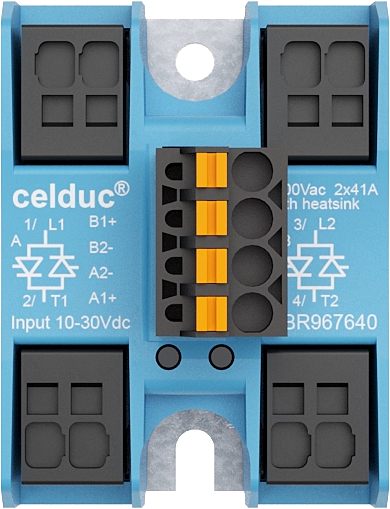
We have extended our SOBR range of two-phase Solid State Relays with push-in terminals available for resistive loads AC-1.
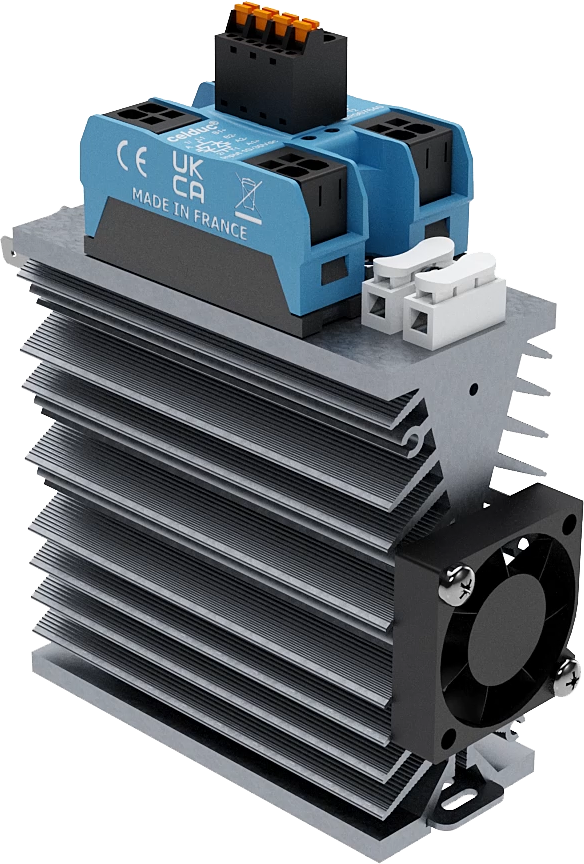
celduc® also offers “Ready to use” models with integrated heatsink.
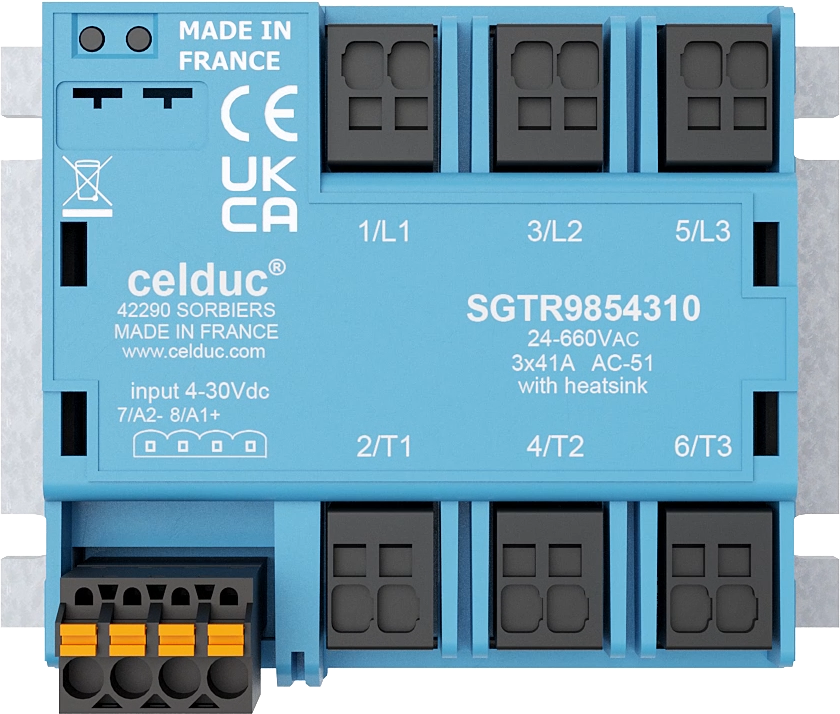
Our 3-phase Solid State Relays are also available with push-in terminals to control resistive loads up to 3 x 41A @ 40°C or 3 x 32A @40°C (thyristor rating up to 125A per line).
We offer 2 versions depending on your application :
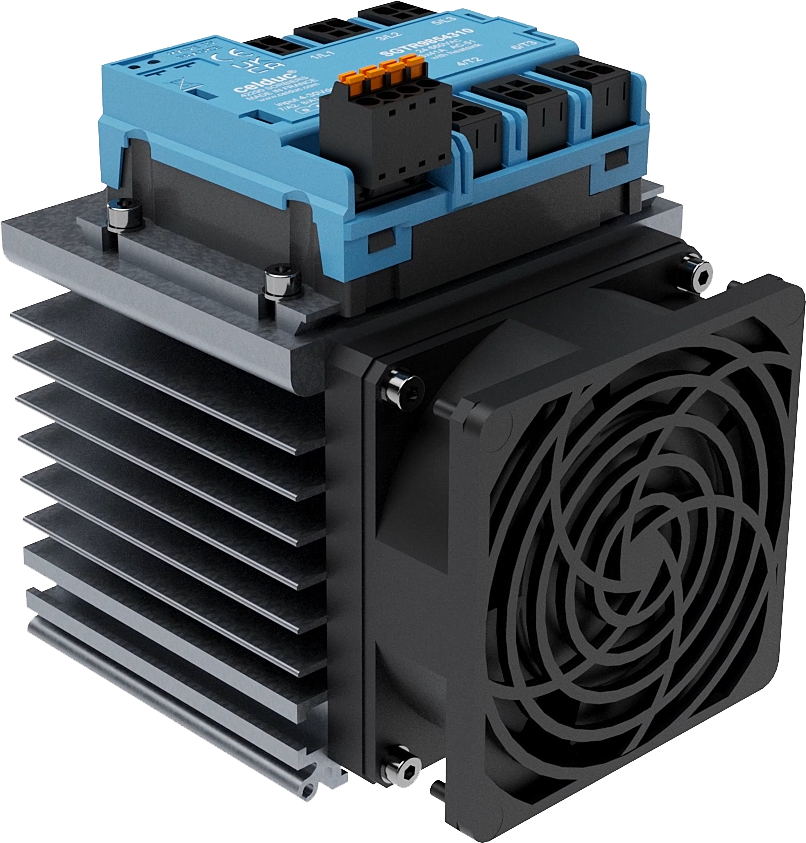
celduc® also offers “Ready to use” models with integrated heatsink.
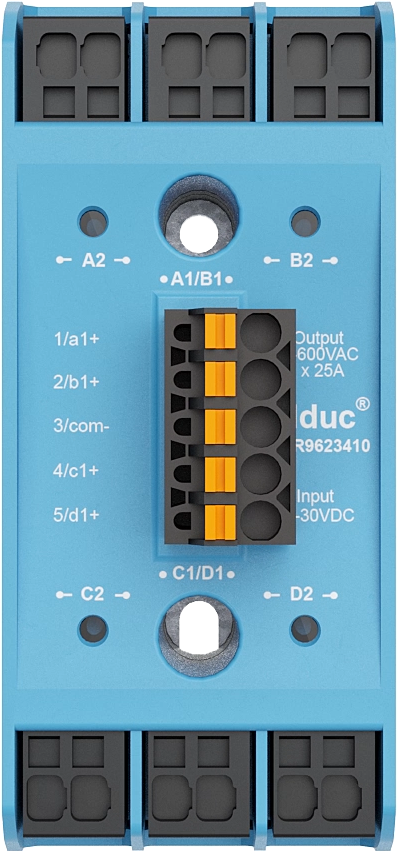
Integrating 4 single-phase relays in a “sightpac” style housing, our SMQR product family is the best choice to reduce the size of your control panel (compact 45 mm version). This range is suitable to control resistive loads up to 4 x 41A @ 40°C.
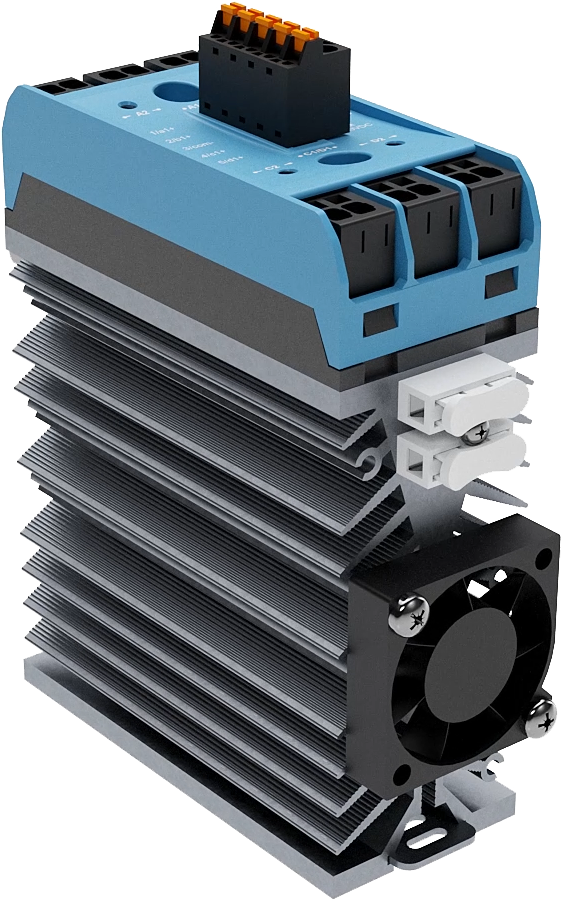 celduc® also offers “Ready to use” models with integrated heatsink.
celduc® also offers “Ready to use” models with integrated heatsink.
“Push-In” connections offer many of advantages :
In comparison with screw terminals, push-in terminals are not only easier to handle, but also offer significant time and cost advantages over the entire life cycle of a system. Faster commissioning reduces upfront costs, and maintenance-free connections provide long-term savings. Furthermore, maintenance-free spring pressure connection technology offer a greater system uptime and equipment reliability.